introduction and general information
Home to Mount Kilimanjaro and one of the most popular wildlife safari destinations in Africa, Tanzania is predominantly chosen for its astounding diversity of wildlife and endless savannah plains. It also offers an idyllic tropical break with the island of Zanzibar lying just off the mainland. A beach and bush holiday in Tanzania is ideal as it is easy to combine epic wildlife safaris with a beach break in paradise. Tanzania's game reserves and national parks are split into the northern and southern safari circuits, with the more popular north featuring the iconic Serengeti National Park, the spectacular Ngorongoro Crater area and scenic Tarangire, while the more remote yet inspiringly beautiful south provides the pristine landscapes of Ruaha and Selous. All the game parks offer excellent lodge accommodation and a two- to three-day stay is recommended at each, allowing time to enjoy wildlife safaris and other activities. Mix it up by starting in the north before spending a few days exploring the south. End your holiday in Zanzibar where a large variety of ocean-front hotels offer luxury living at the sea. The island's capital of Stone Town is worth a day's exploration, filled with history and culture. Four days on the Spice Island should be just enough to rejuvenate the soul as you swim, snorkel and enjoy leisurely boat cruises. International flights to Tanzania land in Dar es Salaam, an urban and bustling city. Due to the size of the country and road conditions, a guided itinerary or fly-in safari of approximately two weeks is highly recommended.
our top 5
Ngorongoro Crater
The Ngorongoro Conservation Area lies on the southern side of the Serengeti Plains and encompasses a large area of short grassed savannahs. Its undisputed highlight is the Ngorongoro Crater, a UNESCO World Heritage site renowned for both for its geological splendour and for being home to some of the densest large mammal populations found anywhere in Africa. The crater itself covers about 260 km2 and was created when a large volcano exploded and collapsed on itself two to three million years ago. As a result of this relatively closed environment, the crater has its own unique ecosystem with an immense variety of flora that includes the Lerai Forest in the southwest corner, Lake Magadi to the north, and the Ngoitokitok Springs in the east where pods of hippo converge. Dryer conditions are found further north where open grasslands support the majority of wildlife including over 55 mammal species and scores of birdlife. Predators are also abundant and virtually every Ngorongoro safari guarantees large concentrations of game. The reliable presence of predators is one of the reasons for the area's popularity with lions sometimes hunting in close proximity to safari vehicles, making for thrilling game viewing. The Ngorongoro Crater is easily accessible and although there is no accommodation within the crater itself, visitors can choose to stay on the crater rim or on the Rift Valley Escarpment. The former boasts fantastic views and a choice of mostly luxury lodges, while nearby Karatu is filled with character and a larger variety of affordable accommodation options.
Suggested length of stay: We recommend basing yourself near Ngorongoro for 2-3 nights allowing time to enjoy a few guided game drives as well as the other nearby attractions such as Olduvai Gorge and the Empakaai Crater. Contact Boutique Africa about making this location part of your greater Tanzanian safari itinerary.
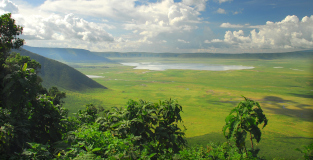
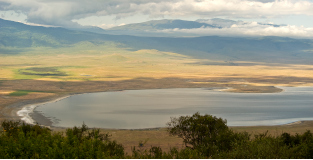 Add to Favourites
Add to Favourites
Serengeti Great Migration
Regarded as one of the greatest natural spectacles on earth, the Great Migration is often the main highlight for visitors to Tanzania. It follows an annual pattern as vast numbers of wildebeest and large herds of zebra, Grant's gazelle, Thomson's gazelle, eland and impala constantly search for fresh grazing. In late November, herds begin arriving on the short-grass plains south and east of Seronera and north of the Ngorongoro Conservation Area. During this time wildebeest calves are born before the herds begin moving north. By May the plains around Moru Kopjes and west of Seronera are filled with hundreds of thousands of animals and movement is halted on the south side of the Grumeti River where wildebeest build up to a high density before crossing. The migration then moves northwards during July and August towards the Mara River on the border of Tanzania and Kenya. Through gushing water, frantic herds of wildebeest cross the river in dramatic and spectacular fashion, often filled with scenes of great panic and confusion. By October herds head south again and the cycle begins anew. Accommodation choices can be divided into four main areas: Southern Serengeti, brimming with wildlife from November to April; Seronera, with plenty of wildlife action throughout the year, particularly in April/May when the migration passes by; the Western Corridor, where herds congregate in May to July before crossing the Grumeti River; and Northern Serengeti, with comparatively less visitors than the rest of the Serengeti but where you can still enjoy spectacular wildebeest crossings over the Mara River from August to October.
Suggested length of stay: If time permits, we suggest 5-7 nights to take in the immense splendour of the Great Migration. Contact Boutique Africa to assist in planning your unforgettable safari holiday.
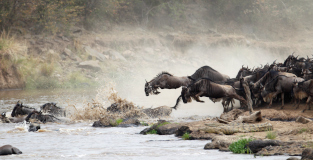
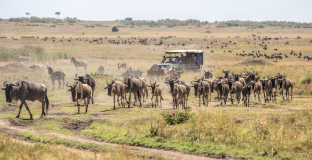 Add to Favourites
Add to Favourites
Mount Kilimanjaro
An iconic feature of Tanzania's landscape, Mount Kilimanjaro ranks as the largest free-standing mountain in the world. Peaking at 5 995 m above sea level, it is the result of an extinct volcanic massif with three separate cones: Shire, Mawenzi and the highest, Kibo. The shining mountain seemingly floats in a wreath of clouds above the plains of the Mount Kilimanjaro National Park where over 154 mammal species thrive on the rich volcanic vegetation. Here an incredibly diverse series of habitats rises from the pastures of the native Masai people and up the mountain slopes, where melt-water streams from the summit nourish a lush belt of tropical forest favoured by herds of elephants. Further up, montane forest gives way to alpine meadows until at 4 000 m the landscape changes to eerie, towering stems of giant lobelias in a sea of soft heather. Above this otherworldly scenery little exists, besides mosses and lichens that cling to the rocks before giving way to snowfields that lead to the mountain's three craters. While some visit Mount Kilimanjaro purely to conquer its peaks, the area is also ideal for a day visit where base walks offer a glimpse into the wondrous wealth of flora and fauna that the mountain holds. There is a good selection of accommodation options, each providing their own specialised activities, such as bird-watching, nature walks, game drives including off-road and night safaris, hikes, trout fishing and visits to local villages.
Suggested length of stay: If you're in it for the climb, the peaks of Kili take at least five days to reach. Those just sightseeing can visit for the day or spend 2-3 nights near the base. Mount Kilimanjaro is very close to the Kenyan border making it an ideal location to stop over en route from Tanzania to Kenya.
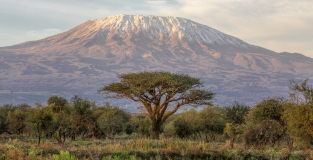
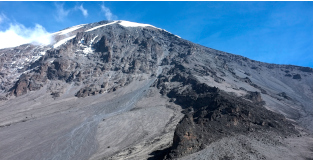 Add to Favourites
Add to Favourites
Tarangire National Park
Picturesque and serene, the Tarangire National Park forms part of Tanzania's popular northern safari circuit. It is the sixth largest in the country and named after the Tarangire River that runs through it, with huge baobab trees dotting its rocky slopes famed for their scenic beauty. The park is best known for its immense concentration of elephants and boasts an ecosystem that is one of the most lively and diverse in Tanzania featuring a large number of lions, buffalo, impala, waterbuck, leopards and cheetah, among others. Also renowned as a bird watching destination, species that frequent the park include African hoopoe, kingfishers, ostriches, Kori bustards, secretary birds, vultures and marabou storks that dominate the verdant swamp lands which in turn flow into grassy plains. It could be said that Tarangire is largely underrated, and many choose just a short visit to the more popular northern section of the park. We therefore recommend more time to explore the quieter southern region, offering magnificent and peaceful game viewing, especially during the drier months of July to October when game densities are at their peak. Accommodation options are varied with a selection of camps and lodges located within the park itself as well as around the perimeter. Morning and afternoon game drives are the main activities in Tarangire, although some of the camps also offer night drives and nature walks.
Suggested length of stay: We recommend including 2-3 nights in Tarangire as part of your exploration of Tanzanian's northern safari circuit. Although not a small park, Tarangire offers a peaceful natural abundance that is often ignored in favour of the famous plains of the Serengeti; however, it is a wildlife experience not to be missed.
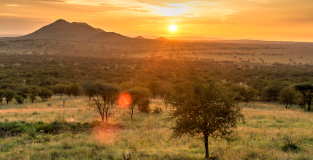
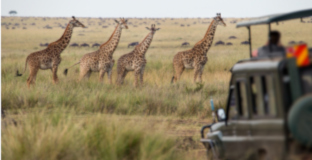 Add to Favourites
Add to Favourites
Zanzibar
The tropical island of Zanzibar is part of the Zanzibar archipelago lying just off the coast of Tanzania. It's a dreamy little spot and the perfect way to end off a Tanzanian safari vacation, where soft sand mingles with ancient culture, exotic spices, barefoot luxury, and a host of marvellous marine activities. Powdery white beaches are fringed by palm trees while the warm, shallow ocean waters are alive with eye-catching coral reefs that are perfect for diving or snorkelling. At the heart of the island lies Stone Town, a labyrinth of narrow alleys complete with old palaces, mosques, and tiny shops, and we strongly recommend spending a day exploring the culture and rich history of this eclectic little town. Popular attractions include the House of Wonders, Arab Fort and the Anglican cathedral of Christ, built almost entirely from coral stone. Spice tours take you through villages and spice plantations, while the Jozani Forest is one of the last remaining sanctuaries in the world for the red colobus monkey. Although Stone Town has a few characterful hotels, by and large visitors choose to stay on the beach, and there is an excellent assortment of seaside accommodation available. Most include full board and lodging and will happily assist you with diving equipment or day transfers into Stone Town and boat trips to nearby islands. Visitors should bear in mind that while private resorts accept Western beach attire, Stone Town is a deeply religious area and modesty is advised. It is possible to travel by ferry from Dar es Salaam or catch a much quicker plane flight.
Suggested length of stay: We suggest at least 5-7 nights in Zanzibar where you can spend your days soaking up the island vibe as well as take some time to explore this stunning little archipelago.
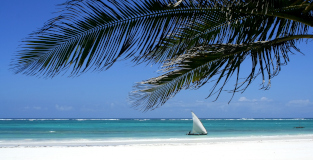
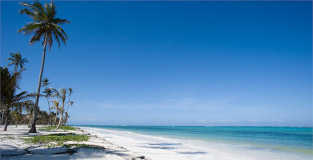 Add to Favourites
Add to Favourites
